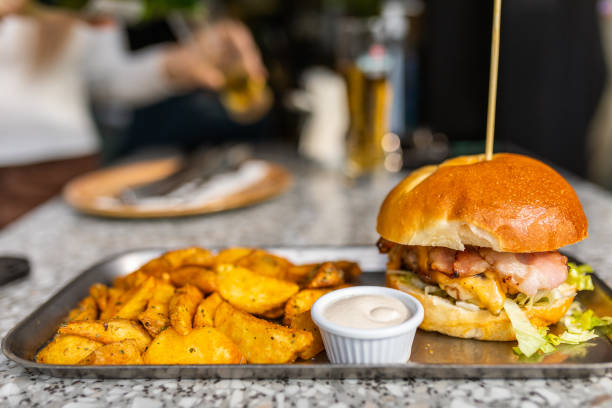
Effects of Extraction Strategies on Yield, Physicochemical and Antioxidant Properties of Pumpkin Seed Oil
This study examined the impact of three extraction methods which included cold pressing (CP) as well as the microwave-pretreatment press (MP) Supercritical Fluid Extraction (SFE) on quantity, the physicochemical characteristics bioactive compounds and antioxidant characteristics that pumpkin seeds oil (PSO). Additionally, the relationship between bioactive substances and the anti-oxidant properties of PSO was established. The results showed that the amount of PSO obtained using three methods was on the range that of MP > SFE. Furthermore it was found that the PSO produced by SFE had the highest fatty acid unsaturated content and was being followed by MP as well as CP.
Furthermore, MP-PSO showed the most acid value and the highest saponification values, while SFE-PSO showed the highest peroxide content, moisture content, and Iodine value. Furthermore, MP-PSO showed superior antioxidant properties. PSO produced by MP had excellent antioxidant properties when compared to PSOs that CP and SFE produced in the oxidation-induction, DPPH, FRAP, and ABTS tests. The correlation study revealed that particular kinds of bioactive compounds like b-sitosterol and g-tocopherol were strongly associated with beneficial antioxidant characteristics of PSOs. Therefore, this study offers a complete understanding of PSO extraction and physicochemical properties, extraction of bioactive compounds, and the antioxidant properties associated with them.
Introduction
Pumpkin is a vining herbaceous perennial that is part of the Cucurbita genus within the Cucurbitaceae family, which includes more than 825 species and 119 genera. of plants. 1 ]. The flesh of a pumpkin can be used to make different food items including dried fruit pie soups, juices and soups cakes, and the like, while pumpkin seeds are mostly consumed as snacks with flavor through roasting. The seeds of the pumpkin are high in protein and lipids sugar, minerals as well as starch and bioactive compounds.
This makes them a great source of food items 2 ]. Particularly, pumpkin seeds comprise more than 30.0 percent of lipids within their composition. The principal fatty acids being are oleic acid, stearic acid, palmitic acid and linoleic acid. which the oleic acid (21-47 percent) and the linoleic acid (36-61 percent) are the most abundant fatty acids. 3 ]. It is a pumpkin seed oil (PSO) which is made from the seeds of pumpkin has received a lot of attention in recent years because of the health benefits that could be derived from unsaturated fatty acids, as well as antioxidant and micronutritive compounds which include phytosterol, antioxidants, tocopherols as well as Vitamins, phenolic acid and carotenoids 4 ]. In addition to cooking, it can be used as a food that can be used to treat and prevent cerebrovascular and cardiovascular disorders as well as prostate cancers 5 ].
PSO is recognized as a premium vegetable oil that can be used in food and medicine across all over the world. Processing technology for PSO has a significant impact on its composition and the amount of lipids. These also influenced the functional and nutritional value of PSO Its nutritional and functional properties were also influenced by its processing technology. 6 ].
Investigating the impact of various methods of processing in the nutrition components PSO is vital in order to increase both the functional and nutritional benefits of PSO.Among the various strategies for extracting vegetable oils that use cold pressing, the cold press extraction technique is widely regarded particularly for premium oil products, like olive oil, because of its benefits, such as the light color, better taste and flavor, lower free fat content, low peroxide values, and its very high capacity for retention of biological substances 7 ]. However, those who make money from vegetable oils often criticize the cold pressing process due to its poor oil yield. Pretreatment using microwaves on oil seeds is reported as a viable technique to increase the production of oil and the release of bioactive substances in the process of extraction. 8 ].
In addition, supercritical fluids show exceptional extraction properties for seed oils when exposed to a liquid-to-gas extraction medium at high pressure and in a vacuum that is close to or over the critical point, which results in a higher yield of oil extraction (or yield) 9]. In fact, the supercritical fluid extraction technique is widely used in the extraction of vegetable oils and also in PSO because of its Furthermore, both chemical and physical methods are typically used to determine the vegetable oils’ antioxidant capabilities. properties.
Furthermore the oil yield and the physicochemical characteristics of PSOs extracted using the three methods were evaluated. In addition, the connection to PSO anti-oxidant properties as well as bioactive substances was discovered. The primary purpose of this study was as they were: (1) to investigate the effectiveness for CP, MP, and SFE for the extraction of PSO; (2) to evaluate results, the physicochemical characteristics and bioactive components and the antioxidant qualities of PSO that were obtained using CP, MP, and SFE as well as (3) to study the connection between bioactive compounds found inside PSOs along with their antioxidant characteristics, such as the oxidation-induction process, DPPH, the FRAP and ABTS. This will help to understand the effect of processing techniques on the physicochemical properties as well as chemical properties of PSO and help in the creation of a functioning PSO industry.

